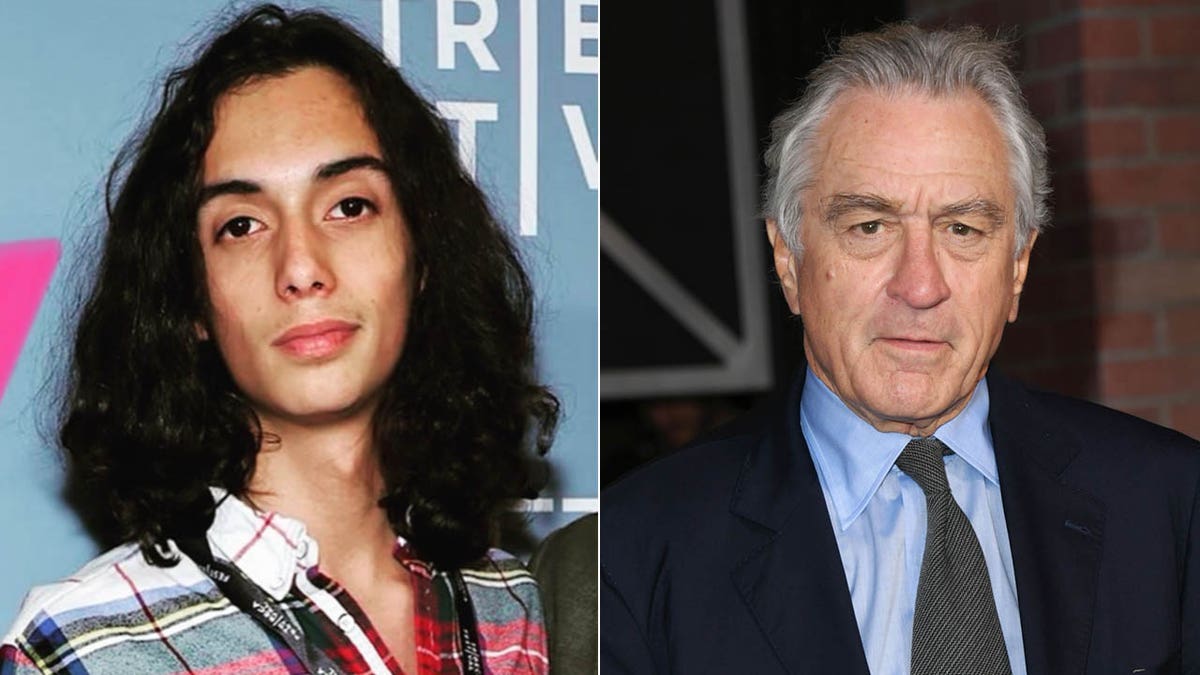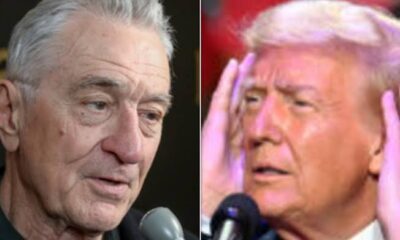CELEBRITY
FENTANYL KILLERS UNMASKED: The 5 Charged with MURDERING De Niro’s Teen Grandson in Deadly Pill Plot!… Does it relate to politics or not, find out!!!

On July 2, 2023, Leandro Anthony De Niro‑Rodriguez—the 19-year-old grandson of Robert De Niro—was found dead in Manhattan. His death was ruled an accidental overdose, caused by the toxic effects of multiple substances including fentanyl, bromazolam, alprazolam, 7-aminoclonazepam, ketamine and cocaine.
In October 2025, federal prosecutors announced that five men have been charged in relation to a drug-distribution conspiracy tied to Leandro’s death (and other teen deaths). They are: Grant McIver, Bruce Epperson, Eddie Barreto, John “John John” Nicolas and Roy Nicolas.
According to prosecutors, this group allegedly operated a wide-reaching network through which they distributed counterfeit pills (including those laced with fentanyl) via social media platforms targeting teens and young adults in New York City.
One earlier defendant, Sophia Haley Marks (also called “Percocet Princess” in press reports), was previously charged for selling pills to Leandro that allegedly contained fentanyl.
Key Issues & Truths
1. Fentanyl’s lethal role
Fentanyl is extremely potent and has become a leading cause of death among younger Americans.
In this case, the pills consumed by Leandro weren’t just legal pharmaceuticals—investigators say they were counterfeit or adulterated with fentanyl (and other substances) to increase potency (and risk).
The use of social media, pills disguised as benign medications (e.g., oxycodone look-alikes), and teen targets magnified risk.
2. Legal charges and terminology: “murdering” vs “distribution leading to death”
The headline uses the word murdering, but legally what is publicly charged is conspiracy to distribute controlled substances resulting in death (rather than first-degree murder).
Whether prosecutors call it “murder” or “drug-distribution homicide” depends on jurisdiction and specific statutes. The conduit here is drug-distribution causing fatal overdose, not necessarily the classic homicide definition.
So while morally it may feel like “murder,” strictly speaking the legal charge is tied to the distribution of deadly pills and deaths resulting.
3. Victims beyond the De Niro family
The case isn’t just about one teen death. Reports indicate at least three New York City teens died in 2023 from pills tied to the same network.
This broadens the scope: the case is less a single celebrity family tragedy and more part of a larger youth-overdose epidemic involving fentanyl-laced pills.
4. Does politics play a role?
At first glance, this case appears criminal and public‐health rather than strictly political.
However, there are elements that brush up against politics:
The broader fentanyl epidemic has become a major policy issue in the U.S.—law enforcement, public health, drug-policy reform, border control and pharmaceutical regulation all play into how fentanyl enters the supply.
The use of social media in distributing illicit pills raises questions about regulation of platforms, youth safety, digital enforcement — all topics of political debate.
Funding for drug-enforcement, cross-border interdiction, treatment for addiction, youth-prevention programs: these are policy areas often subject to political decision-making.
But in this specific case, there’s no publicly-reported indication that the arrests or charges are directly tied to political corruption, campaign influence, or government officials being complicit. It appears to be a law-enforcement action against a criminal network.
Therefore, while the case intersects with policy and politics at a broader level (public health, drug enforcement), it doesn’t currently appear to be about politics in the sense of political motive or partisan intrigue.
Implications & Reflections
For youth and families: The tragedy shows how high-risk counterfeit pills can be, how fentanyl can unexpectedly be in what appears to be a legitimate medication. It’s a powerful reminder for parents, teens and communities about the risks of non-regulated drug use.
For law enforcement & policy: The case demonstrates evolving tactics: drugs sold over social platforms, distributed to teens, disguised as familiar pills. It suggests enforcement must adapt, digital surveillance may increase, and prevention must be robust.
For society at large: Celebrity-family involvement (e.g., De Niro) underscores that overdose risk doesn’t discriminate by wealth or status. It also helps raise public awareness of the fentanyl threat.
For the “political” dimension: This is a cautionary tale that crosses into politics when policy (drug regulation, youth protection, online platform oversight) fails to keep pace. While the direct case isn’t politically motivated, the environment around it absolutely is shaped by political decisions.
Final Thoughts
Yes—the case is real, tragic, and contains many of the elements in the headline (“5 charged… deadly pill plot… De Niro’s teen grandson”). The truth is that five individuals are charged (not yet convicted) for distributing controlled substances tied to the fatal overdose of Leandro De Niro-Rodriguez and others. The word “murdering” in the headline may over-simplify the legal nuance, but morally the loss of life and the culpability of selling lethal pills is stark.
As for politics: the case is not primarily about politics in terms of power, governance or political malfeasance—but it is deeply tied to political questions around drug policy, youth safety, social media regulation and public health.













